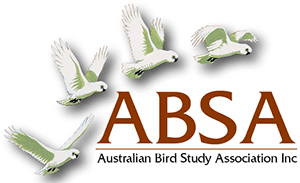Foraging and reproductive behaviour of the Dusky Megapode in Halmahera, North Maluku, Indonesia
| Posted: |
13/04/2022 |
| Author(s): |
Adhityo Wicaksono, Lulu Lusianti Fitri, Ningsi Saibi |
Dusky Megapodes, Megapodius freycinet occur in Southeast Asia, but their foraging and reproductive behaviours
are very poorly known. The aim of this research was therefore to document some aspects of these traits in the wild. The
study was conducted in Halmahera, Indonesia at Simau from July-August 2014 and Tabadamai from January-May 2015.
Qualitative observations and focal sampling were performed from 06.30-16.00 daily to document the behaviour repertoire
and construct time-activity budgets. Vocalisations were also recorded and data on the nest mound environment, egg
morphometrics and the characteristics of vocalizations were collected. Megapodes foraged on the forest floor by raking
the leaf litter for insects and fruit with their feet. In Simau village foraging was the dominant diurnal behaviour, whereas
in Tabadamai village, where observations were made during the breeding season, nest-hole digging for egg laying was
more prominent. Nest mounds, composed of soil, leaf-litter and bark collected from the immediate neighbourhood, were
found in lowland forest and were ~0.5 m tall and 5-6 m in diameter. In active mounds, sub-surface soil temperatures were
26-40ºC and relative humidity was highly variable (10-80%). Light intensity at the surface of active mounds ranged from
242-1,787 lux. Egg length and maximum width were 8-10 cm and 3-4 cm, respectively, and egg mass was 75-110 g. Five
distinct vocalizations were identified, including contact, alarm and stress-induced calls. This basic information should
assist in the conservation of the species, which is subject to hunting and habitat reduction pressures.
>> Download Abstract |
File Size: 246 KB
>> Download Complete PDF | File Size: 8.38 MB
